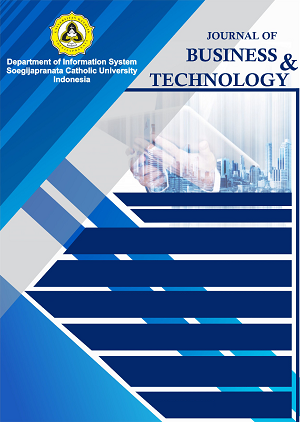Design of Melodi Nusantara Rhythm Game to Introduce Traditional Indonesians Song
Abstract
At The culture of traditional music and songs in Indonesia is one of the results of intellectual and cultural richness, which plays an important role in the lives of traditional communities. In addition, traditional music and songs are also national assets that embody strategic values for both Indonesia and foreign parties. Therefore, there is a need to protect traditional music and songs in Indonesia. "Melodi Nusantara" is the name of a game developed to support and introduce traditional music and songs of Indonesia. The game "Melodi Nusantara" is a rhythm game genre. The rhythm game genre is very popular and loved by all, and this game requires players to follow the rhythm of a song. This game is very suitable for listening to music while playing. With the existence of the "Melodi Nusantara" game, it is hoped that players will be able to recognize the music culture of each region in Indonesia. And researchers can also see if the "Melodi Nusantara" game will continue to be useful for players and if they would want play the "Melodi Nusantara" game in the future.
Keywords
Full Text:
PDFReferences
M. Harrison, “All About Music Theory.” p. 32, 2009.
Wiflihani, “Pengetahuan Dasar Teori Musik,” Pendidik. Musik, pp. 1–9, 2015, [Online]. Available: http://digilib.unimed.ac.id/425/1/Pengetahuan dasar teori musik.pdf
E. Prakash, C. Dodd, M. Salihan, and A. Heppenstall, “Game development,” in Computer Games and Allied Technology 08, CGAT 08 - Animation, Multimedia, IPTV and Edutainment, Proceedings, 2008. doi: 10.2307/j.ctv173pf.17.
V. Bégel, I. Di Loreto, A. Seilles, and S. Dalla Bella, “Music games: Potential application and considerations for rhythmic training,” Frontiers in Human Neuroscience, vol. 11. 2017. doi: 10.3389/fnhum.2017.00273.
Katie Salen and Eric Zimmerman, Rules of Play: Game Design Fundamentals, vol. 4, no. 2. Cambridge: MIT Press, 2005.
Godot. Community, “Godot Documentation.”
W. W. Royce, “Managing the Development of Large Software Systems (1970),” Ideas That Creat. Futur., no. August, pp. 321–332, 2021, doi: 10.7551/mitpress/12274.003.0035.
Mudjilah and S. Hanna, “Diktat Teori Musik 2,” Yogyakarta Univ. Negeri Yogyakarta, Fak. Bhs. Dan Seni, p. Halaman 96, 2010, [Online]. Available: http://staffnew.uny.ac.id/upload/131782842/pendidikan/teori-musik-2.pdf
L. B. Meyer, Style and music: Theory, history, and ideology. University of Chicago Press, 1996.
Anonim, Rudiments and Theory of Music. England: The Associated Board Of The Royal Schools Of Music, 1958.
S. Murray, Interactive Data Visualization for the Web. 2013. doi: 10.1017/CBO9781107415324.004.
Sugeng, Validitas dan Reliabilitas Penelitian. 2014.
C. Schmidt-jones, “Understanding Basic Music Theory : Course Introduction,” pp. 6–7, 2008, [Online]. Available: http://oers.taiwanmooc.org/handle/123456789/125812
G. Iktia, “Pengantar teori musik,” Profilm, pp. 131–157, 2017.
W. F. Thompson, E. G. Schellenberg, and G. Husain, “Perceiving prosody in speech. Effects of music lessons.,” Ann. N. Y. Acad. Sci., vol. 999, pp. 530–532, Nov. 2003, doi: 10.1196/annals.1284.067.
DOI: https://doi.org/10.24167/jbt.v3i3.10225
Refbacks
- There are currently no refbacks.
e-ISSN: 2776-0332 | View My Stats



